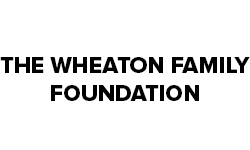Part B: Learning Plan
In this inquiry students will examine:
- The influence of culture and place on the social structure, ways of life, individual beliefs and values and the use of the natural environment.
- Concepts of assimilation, segregation, privilege, marginalization, accommodation, and pluralism and examine the history of those concepts in a variety of cultures.
- The relationship that people have with the land noting where people choose to live and how the land is used.
QUESTIONS TO GUIDE INQUIRY
Teachers may want to consider putting the questions into a “Before, During, After” chart to note the changes in students’ thinking as a result of the inquiries.
- What is government’s responsibility to ensure and maintain common good?
- What is common good? Is it constant?
- Does the idea of common good change depending on the culture, community?
- How much control do you have over the impact of your actions/decisions?
- What responsibility do you have to balance personal needs with the community’s needs?
- What is the power and responsibility of the individual to make a difference in the world?
- What is the appropriate Citizenship response to the marginalization witnessed daily?
- How does the impact of the natural environment affect the development of society?
- What is the impact of your environment and relationship with the land on your personal beliefs?
- Can your environment affect your beliefs and values?
- Does your environment and where you live/sense of place/relationship affect how your cultural and social behaviours develop?
- Did we form families first or did the environment affect the families we formed?
- What role does empathy play in citizenship?
- What are the impacts of supporting my life-style on my local and global community?
This citizenship study invites students to take another person’s perspective and to begin to understand how culture, the environment, and social beliefs impact how others may live. It is easy for students to assume that their experiences of life in Canada are “the norm” without an appreciation for the diversity that exists even within the classroom. Citizenship explorations ask students to consider alternate realities and wonder how living their lifestyles impacts on youth in other countries. Vocabulary study is critical to the development and deepening understanding. Vocabulary concepts include: empathy, accommodation, assimilation, marginalization, privilege, – white privilege, unearned advantage, pluralism, and segregation. (see glossary)
CONNECT TO TOPIC AND SURFACE STUDENTS’ THINKING ABOUT …
There are many videos that teach students about empathy. Use some of your favourites. Students can also explore the differences they can make with Acts of Kindness which are popular
https://www.youtube.com/watch?v=PT-HBl2TVtI
Students will examine the impact of the environment, culture and place on individual beliefs, values, and social and cultural practices and begin to understand the diversity that exists in the world and the impact these factors have on lifestyle and standard of living.
Teachers are encouraged to have their students explore empathy. There are many expressions and phrases that remind us of the importance of trying to understand another person’s perspective. Have students provide their own examples or explore the following phrases.
- “Walk a mile in my shoes.” Elvis Presley
- “Don’t judge a man until you have walked a mile in his moccasins.” from a poem by Mary T. Lathrap, “Judge Softly,” written in 1895.
- “You never really know a man until you understand things from his point of view, until you climb into his skin and walk around in it.” Lee Harper. To Kill a Mockingbird
- 7 experiences that expanded my empathy
- http://www.buzzfeed.com/nathanwpyle/experiences-which-expanded-my-empathy#.srR1Vwe7b
- Have students think about what the sayings mean. Is this idea common to all cultures? Are similar phrases found in other languages? Why do students think this is so?
- What is Empathy – YouTube video https://www.youtube.com/watch?v=Q5jrUg_kXjY
What do these phrases, stories, sayings ask students to do? What meanings do students take away?
What role does empathy fulfill in citizenship?
- Have students study examples of current citizenship events or social justice issues. What points of view are evident? Are there any situations where two different perspectives cause people to choose sides? Is there an opportunity for understanding another perspective or empathy to occur? Have students identify the impact they think empathy might have in this situation.
- Have newcomers to Canada come into the classroom to share their experiences with school, learning a new language, coming to Canada. Where there times when empathy impacted their experiences? Identify the difference empathy made or could have made.
- Give examples of times when students changed their minds about something after they understood the situation better. How has empathy impacted their lives so far?
Personal and Family Responsibility Survey within classroom
- List responsibilities, jobs, things that students must do within family and community
- Begin with day and do a survey of tasks or responsibilities of students, expand to week i.e. school, eating, entertainment – sports, hobbies, personal time, sleeping, other responsibilities
- Group and develop categories, label those categories i.e. school, homework, child care help, housework, personal choice, relaxation, hobbies, work, survival. Post categories for later reference and examination of other countries
- Have each student or group develop their own graph of the approximate percentage of day/week spent doing various activities
- Identify whether those responsibilities have increased and reasons why (link to age of students and accepting increased responsibilities within family and community i.e. child care)\\
- Have students reflect on what their identified responsibilities say about their lifestyle. How much time is spent on personal development (school), personal enjoyment (hobbies), and survival?
- How much consistency is there within the classroom?
- What are some big ideas that are surfacing?
- Develop summary statements for later reflection as students explore circumstances of students their age in other cultures and countries.
How have students’ jobs/responsibilities changed?
Examine the activities and lives of the students in the class. Begin with: One hour, one day, and move to one week.
Tabulate the activities in the lives of students in the class. Have students then interview their caregivers, parents, elders, grandparents or someone from outside of their family to compare responsibilities from the past to the present.
- How do the responsibilities compare?
- How would the interviewee (caregiver, parent, elder) describe the life of the interviewer (student)?
- What do your activities, your responsibilities say about what you and your family value and believe in?
- What do your activities and responsibilities say about what your society values and believes in?
- What are some of Canada’s ideas about how children should spend their youth
For all areas of study in Grade 6, students will be comparing the Canadian experiences to countries bordering the Atlantic.
Teachers are encouraged to identify specific countries and have students study those same countries repeatedly so that students can gain a stronger understanding of the diversity of those countries.
DEVELOPING UNDERSTANDING
- For Canadian studies make sure students research First Nations, Inuit, and Métis people and non-Indigenous people, including immigrants.
- For countries bordering the Atlantic, ensure that students research indigenous and non-indigenous people of the country and identify the names and backgrounds of the peoples studied.
- Examine local, provincial, and national community context where possible.
- Have students continue to research the same country and go deeper into each study so that they become the class resident experts on that particular country.
Divide class into groups and give each group a specific country to learn about and present to class. Each group must find out the information in the framework posed below. At the end of the studies the students will be experts on a particular country and will share their knowledge with their classmates. Encourage students to present information learned in a variety of modes including speaking, writing, drama, multimedia, or other modes so that all students have an entrance point for demonstrating their learning and understanding.
How does the way we live our lives in Canada compare with other countries?
Begin with Canada and then extend your research to include countries bordering the Atlantic Ocean.
Complete the following chart for your country and develop summary statements about the beliefs of the culture with respect to family structure and responsibilities. Be prepared to defend your statements with evidence from your research. (This will be the organizing sheet through which students research their assigned country.)
Teachers may wish to conduct the first part of this inquiry by examining Canada.
Family and societal roles:
- What are examples of some common family structures or constructs?
- What would be your family responsibilities in this culture?
- What would be your community responsibilities in this culture?
- What do these responsibilities and family structures tell you about what the culture’s beliefs about family?
- How does this compare with the Canadian experience?
For Organizational Chart, see appendix.
After student presentations have student groups…
- How would your group describe the life of a person your age in the different countries studied? Similar/Easier/Harder?
- What do the activities, responsibilities of your peers say about what is important to that culture – that the culture values or believes in?
- What do the activities and responsibilities say about what that society values and believes in?
- How do those experiences compare with the Canadian experience?
- Similar
- Better
- Worse
- What might be some of the social rules for this country? Post for later reflection.
APPLY AND EXTEND KNOWLEDGE
Students are continuing to research the same country previously researched. They are becoming the class experts on that particular country.
For some classes, the teacher might choose to explore the concepts by studying Canada first as a group and then giving students specific countries to research.
- How does the way we live our lives in Canada compare with other countries?
- What do students think are some of the factors impacting the standard of living?
- What are the big ideas that are surfacing in their minds?
Post these generalizations/ big ideas as they lead into the next outcomes study regarding the impact of the environment on the places where people choose to live.
Inquiry: Analyze the impact of the natural environments on the ways of life
How does the environment affect the decisions society makes about where to live and work and how we live?
Connect back to the essential questions and guiding questions posed earlier. Surface and note student thinking before the inquiry and then reflect on their thinking later to see the changes.
- How does the impact of the natural environment affect the development of society?
- What is the impact of your environment and relationship with the land on your personal beliefs?
- Can your environment affect your beliefs and values?
- Does your environment and where you live/sense of place/relationship affect how your cultural and social behaviours develop?
- Did we form families first or did the environment affect the families we formed? i.e. family size, make-up, etc.
Have students go back to the country they were studying (including Canada).
Examine the country again to identify specific examples of the following concepts. Include historical and current examples where possible. Develop summary statements for each area of study.
- Settlement patterns
- major cities, landforms, and bodies of water
- population distributions, densities, and growth rates – historical and present
- Summary statement about settlement patterns in this country.
- Economic development
- approaches to natural resource and land use including indigenous and non-indigenous perspectives – historical and present
- primary economic activity(s) – historical and present
- Summary statement about economic development in this country
- Lifestyle choices
- modes of travel
- modes of dress
- health of population
- home and building construction, architecture – historical and present
- Summary statement about lifestyle in this country.
- Artistic and Cultural diversity and expression
- visual and performing arts
- music
- dance
- painting
- sculpture
- literature, stories i.e. fables, myths, etc. from culture
- sporting activities
- recreation and leisure activities
- cultural traditions, celebrations
- Summary statement about cultural diversity and expression in this country.
- visual and performing arts
Present the examples and identify what these examples tell you about:
- The relationship the people studied have with the land/environment.
- The standard of living in that country.
- How culture and place influence the beliefs and values of the local community.
- The beliefs and values of the inhabitants in those regions regarding economic and political organization or government structure.
In groups and then as a class think about and talk about:
- Why do people choose to live where they live? What rule or guiding principle could you develop to describe settlement choices?
- What are the effects of climate and vegetation on the development of people in the selected country? Describe the relationship between the climate and vegetation zones and lifestyles and standards of living.
- What was reaffirmed in their thinking? What were the surprises in what students learned?
- What are the big ideas that students have? What are they inferring?
- Go back to the social rules they identified for each country. Do those rules need adjusting based on their new information?
Identify local people whom students might want to interview to support their research.
- Local youth.
- Elders – interview or read personal stores of Elders who attended residential schools.
- New immigrant youth.
- Consider technology links with youth in provincial, national, and global communities.
- What themes are emerging?
- What are the similarities and differences?
- Why do students think this is so?
The independence level of the class, will determine how much teacher direction is required to do this.
EVIDENCE OF LEARNING
- What would be the lifestyle of a student in the country studied?
- What is the connection between the environment, the use of the environment and the standard of living?
- What are students noticing about the cultural expressions in the countries studied?
- What are students noticing about the connection of the society to the environment and lifestyle?
Have students develop a trade show presentation about their country. The audience is students their age. The presentation should convince people to visit the country either as a tourist or for humanitarian reasons and should address the bullets above.
Inquiry: Social and Cultural Diversity
What makes your life different from others your same age?
Assess the current and historical approaches to cultural diversity used in Canada and in a selection of countries bordering the Atlantic Ocean, including consideration of segregation, assimilation, accommodation, and pluralism. (These concepts were studied in other areas of citizenship.)
Essential Questions Connection
- What role does empathy play in citizenship?
- How do we contribute to marginalization?
- What is the appropriate Citizenship response to the marginalization we witness daily?
Vocabulary (see glossary)
- Assimilation
- Accommodation
- Colonialism
- Common good
- Cultural diversity
- Marginalization
- Pluralism
- Privileged – Under privileged
- Segregation
- Standard of Living
- Reconciliation
CONNECT TO TOPIC AND SURFACE STUDENTS’ THINKING ABOUT …
Begin this study of current and historical approaches to cultural diversity with a study of the different cultural groups of Canada and where they live. Once students have an understanding from a Canadian perspective, they will extend their thinking by exploring the treatment of different cultural groups in countries bordering the Atlantic. Finally students will explore Canada’s history of dealing with diverse cultures and explore how different cultural groups were and are treated within Canada. Students will consider Canada’s history and reputation with diverse cultures through the context of our multi-culturalism policy studied in the Engaged Citizens section.
Begin with classroom, then move to the province, country.
Have students identify:
- Nationalities and ethnic family history of students. Develop a classroom profile.
- Research provincial and national profiles, graph and compare for similarities and differences.
- Note where the various cultures congregate and predominantly live.
- Is the class representative of the province? Country? Why/why not?
- Develop summary statements about the classroom, provincial, and national ethnic profiles.
- Based on study 1 and 2, identify possible reasons why the various profiles exist.
- What is/has been the impact of cultural diversity to the development of Canada?
- Brainstorm with students beginning with the classroom, community, etc.
- Note community, national celebrations of multi-culturalism
- How has cultural diversity affected the development of Canada?
- Research the current and historical contributions of predominant immigrants in:
- Politics, business, health, education
- Research the current and historical contributions of predominant immigrants in:
- Have students develop a summary statement about the social and cultural diversity that exists in Canada.
Chart student answers for comparison against studies of other countries.
Using the jigsaw research and presentation process have student groups answer the following questions:
- How does Canada’s handling of cultural diversity compare with other countries bordering the Atlantic? In your targeted country identify:
- The cultural diversity profile
- Compare that profile to Canada
- How other cultures are treated
- Specific government policies that address culture
- Where indigenous and non-indigenous people live
- Does the government support diversity? What government policies support or detract from immigration?
- Develop a summary statement that indicates how the targeted country feels about cultural diversity.
- Begin to group countries as supportive or not supportive of cultural diversity and plot on the map so that students can consider global patterns.
- Identify possible reasons why these differences exist.
- What connections are students making?
- What are the big ideas that are surfacing?
- What inferences are students making?
- What questions do students have?
Canada is a multi-cultural country that believes in pluralism and has created laws that support different cultures living together. There is significant Canadian history however, of Canada’s treatment of other ethnic groups that demonstrate a different belief. In the Engaged Citizen study, students learned about privilege – specifically white privilege and the impact on diversity. Students are being asked in this study to extend their thinking and examine Canada’s history in treating various cultural groups beginning with Indigenous peoples; First Nations, Métis, and Inuit and moving to the treatment of the Japanese, Jews, and Chinese. This history is explored through the lens of assimilation, segregation, marginalization, accommodation, and pluralism.
Using the Frayer model of vocabulary study (see appendix) examine the concepts of assimilation, segregation, marginalization, accommodation and pluralism.
Present the following question to students and unpack the information taken from Canada’s Citizenship and Immigration website to clarify misconceptions and address any student questions.
Does Canada live up to its multi-cultural policy adopted in 1971?
“In 1971, Canada was the first country in the world to adopt multiculturalism as an official policy. By so doing, Canada affirmed the value and dignity of all Canadian citizens regardless of their racial or ethnic origins, their language, or their religious affiliation. The 1971 Multiculturalism Policy of Canada also confirmed the rights of Aboriginal peoples and the status of Canada’s two official languages.
Canadian multiculturalism is fundamental to our belief that all citizens are equal. Multiculturalism ensures that all citizens can keep their identities, can take pride in their ancestry and have a sense of belonging. Acceptance gives Canadians a feeling of security and self-confidence, making them more open to, and accepting of, diverse cultures. The Canadian experience has shown that multiculturalism encourages racial and ethnic harmony and cross-cultural understanding.
Mutual respect helps develop common attitudes. New Canadians, no less than other Canadians, respect the political and legal process, and want to address issues by legal and constitutional means. Through multiculturalism, Canada recognizes the potential of all Canadians, encouraging them to integrate into their society and take an active part in its social, cultural, economic and political affairs.
Our citizenship gives us equal rights and equal responsibilities. By taking an active part in our civic affairs, we affirm these rights and strengthen Canada’s democracy, ensuring that a multicultural, integrated and inclusive citizenship will be every Canadian’s inheritance.”
This text was retrieved from – https://web.archive.org/web/20130622051907/http://www.cic.gc.ca/english/multiculturalism/citizenship.asp
using the Internet Archive Wayback Machine.
The reproduction of this text has not been produced in affiliation with, or with the endorsement of, the Government of Canada.
- What is “common good”? What is common good with respect to multi-culturalism?
- Is it constant? / What might cause “common good” to change?
- Does the depiction/parameters of common good change depending on the culture, community?
- When does government get in the way of common good?
- How do you control the impact of your actions/decisions?/ How far reaching are the effects of your actions/decisions?
- What responsibility do you have to balance personal needs with the community’s needs?
- What role does empathy play in citizenship? What role did empathy play in the apology below?
- Go back to the countries researched and develop a summary statement about the common good in the studied country.
Questions on Common Good
- What is government’s responsibility to ensure and maintain common good?
- What is common good? Is it constant?
- Does the idea of common good change depending on the culture, community?
Group Study and Discussion of Apology to First Nations People
Students will study an historical example of the policy of assimilation as it applies to the Canadian context, specifically – Residential schools and the education of First Nations people.
Read with students and/or have students read the “Statement of Apology – to former students of Indian Residential Schools” issued by Stephen Harper in the House of Commons – June 11, 2008 found at:
http://www.aadnc-aandc.gc.ca/DAM/DAM-INTER-HQ/STAGING/texte-text/rqpi_apo_pdf_1322167347706_eng.pdf
Determine what students know about Canada’s history on discrimination with First Nations and Métis people.
- Why was the apology issued?
- What was the wrong that occurred; who was wronged and by whom?
- Was the apology the proper thing to do? What else could the government have done?
- What aspects of assimilation, segregation, accommodation, and pluralism are visible in the residential school experience?
- Indigenous people had a specific relationship with the land that impacted the way they were able to live. With the creation of reserves, Indigenous people were confined to specific areas of land. What aspects of assimilation, segregation, accommodation, and pluralism are visible in the decision to create reserves?
- Give a summary statement about how Indigenous people in Canada were and continue to be treated. Provide examples to support your thinking.
- What has been the impact of urbanization, the move to cities on Indigenous people? Provide examples to support your thinking.
- Re-visit the questions on common good.(page 8) Have students’ answers changed?
- Identify reasons why.
- What was the concept of “common-good” at the time of the assimilation policy?
- How has the concept of “common-good” changed since that time?
- What actions, examples provide evidence of change?
- Divide students into groups and have each group research Canadian current and historical examples of one of the following terms:
- assimilation
- segregation
- accommodation
- pluralism
See appendix for graphic organizer
- Post the stories using the specific vocabulary as headings so students can make comparisons against research in other countries.
- Extend the research to include treatment of other ethnic groups including the Japanese, Jewish, Chinese, Indian immigrants, etc.
Exploring countries bordering the Atlantic
- Have students research current and historical examples in countries bordering the Atlantic for each of the following terms:
- assimilation
- segregation
- accommodation
- pluralism
- Complete the chart above and present findings to the class.
- Develop a summary statement about the national beliefs and values of that particular country towards diversity.
EVIDENCE OF LEARNING
Choose one idea below to demonstrate your evidence of learning or have students propose their own.
- Identify how beliefs and values in the countries studied compare with those of youth in Canada. Develop a summary statement about the beliefs and values of Canadian youth as compared to other countries bordering the Atlantic. Represent the belief and value statement in a collage including picture and sound.
- What is the importance of place and the environment to the development of languages and cultures? How do different cultures carry their sense of “place” to Canada after immigration? How are they supported by Canada’s multi-cultural policy?
- Make a proposal to your Member of Parliament identifying the benefits of immigration for Canada and tell how you will personally support immigrants in the community.
- Canada’s history of treatment of Indigenous People is long and shameful. Identify how decisions made by governments to apply principles of assimilation and segregation were thought to be part of the “common good”. Identify a current issue of First Nations people in the community and identify a strategy you could take to address some of the issues as you understand them. Think about the role that empathy could play in solving this issue.
- What role does Empathy play in citizenship? Identify two issues in your study of Canada’s history relating to assimilation, segregation, or accommodation and tell how empathy might have made a difference in the treatment of cultural groups.
APPLY AND EXTEND KNOWLEDGE
Think about… Talk about…Write about
“The Creator put the First Nations on the land and told them to care for Mother Earth. All creation is inter-dependent and equally important.”
Components of First Nations Traditional Worldviews pg. 29 Treaty Essential Learnings
“Land isn’t a heritage from our parents; it’s a loan we owe our children. – Indian proverb
- What do these quotes mean?
- What relationship do students have with the environment?
- What do students believe is their responsibility to the environment?
- How do they demonstrate/act out their beliefs regarding the environment?
- What would the actions of your culture/community say about what your culture/community believes about the environment?
Quebec Charter of Values – You are doing a news story about the Quebec Charter of Values. Explain the Charter, rate the proposed Charter in terms of Canada’s multi-cultural policy and either defend or refute the charter.
STUDENT CITIZENSHIP JOURNAL OPPORTUNITIES
Students are encouraged to use a variety of response mediums in their journal.
- Canada’s treatment of First Nations people has been/is…
- Canada’s apology to First Nations people is…
- My relationship with the environment is…
© 2024 Concentus Citizenship Education Foundation Inc. All Rights Reserved.










